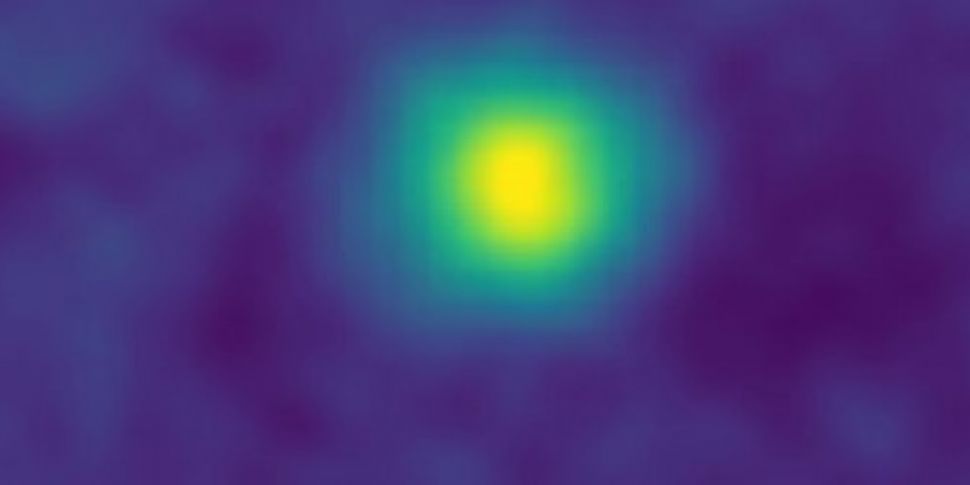NASA's New Horizons spacecraft has turned its telescopic camera toward a field of stars - and made history.
The craft took an image at a record-breaking 6.12 billion kilometres, or 40.9 astronomical units, away from Earth.
This made it, for a time, the farthest image ever made from our planet.
NASA says the routine calibration frame of the 'Wishing Well' galactic open star cluster was taken on December 5th 2017.
For a short time, this New Horizons Long Range Reconnaissance Imager (LORRI) frame of the "Wishing Well" star cluster was the farthest image ever made by a spacecraft | Image: NASA/JHUAPL/SwRI
But the Long Range Reconnaissance Imager (LORRI) broke its own record just two hours later, with images of Kuiper Belt objects 2012 HZ84 and 2012 HE85.
The Kuiper Belt is similar to an asteroid belt, but further out from the Sun and composed of dwarf planets and frozen ice - rather than rocky bodies.
These December 2017 false-colour images of KBOs 2012 HZ84 (left) and 2012 HE85 are the farthest from Earth ever captured by a spacecraft | Image: NASA/JHUAPL/SwRI
These December 2017 false-colour images of KBOs 2012 HZ84 (left) and 2012 HE85 are the farthest from Earth ever captured by a spacecraft | Image: NASA/JHUAPL/SwRI
New Horizons is just the fifth spacecraft to speed beyond the outer planets, so many of its activities set distance records.
On December 9th last, it carried out the most-distant course-correction manoeuvre ever, as the mission team guided the spacecraft toward a close encounter with a KBO named 2014 MU69 on January 1st 2019.
That flight past MU69 will be the farthest planetary encounter in history, happening one billion miles beyond the Pluto system, which New Horizons explored in July 2015.
During its extended mission in the Kuiper Belt, which began in 2017, New Horizons is hoping to observe at least two-dozen other KBOs, dwarf planets and 'Centaurs' - former KBOs in unstable orbits that cross the orbits of the giant planets.
NASA says the New Horizons spacecraft is "healthy" and is currently in hibernation.
Mission controllers will bring the spacecraft out of its electronic slumber on June 4th and begin a series of system checks and other activities.
New Horizons was even farther from home than NASA’s Voyager 1 when it captured the famous 'Pale Blue Dot' image of Earth.
The 'Pale Blue Dot' photo (highlighted section) taken on February 14th, 1990 | Image: YouTube/NASA Jet Propulsion Laboratory
That picture was part of a composite of 60 images looking back at the solar system, on February 14th 1990, when Voyager was 6.06 billion kilometres from Earth.
Voyager 1's cameras were turned off shortly after that portrait, leaving its distance record unchallenged for more than 27 years.












